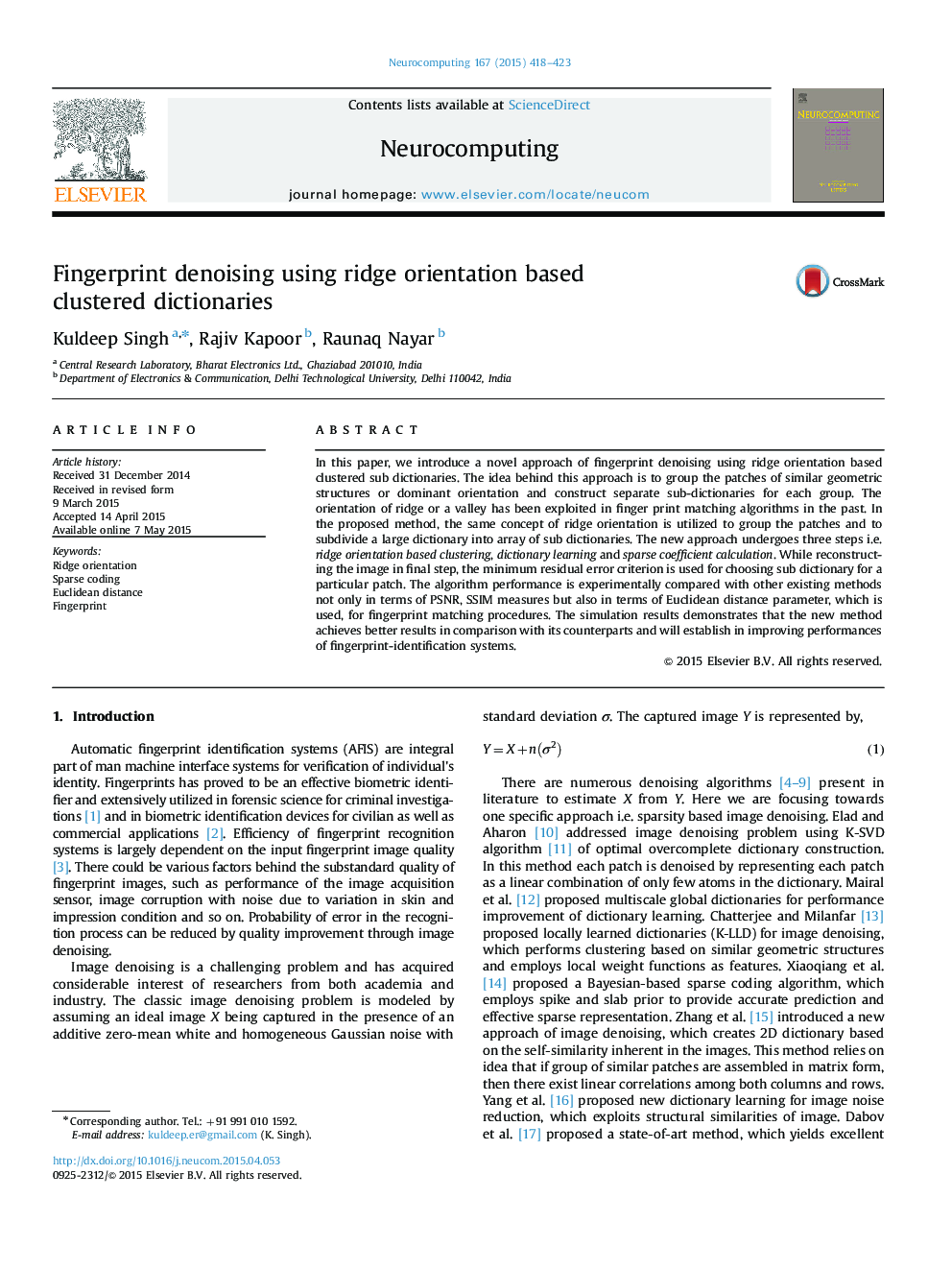| کد مقاله | کد نشریه | سال انتشار | مقاله انگلیسی | نسخه تمام متن |
|---|---|---|---|---|
| 406305 | 678076 | 2015 | 6 صفحه PDF | دانلود رایگان |
• Dominant orientation based sub dictionaries for effectiveness of sparse modeling.
• Sub dictionary for smooth patches (no dominant orientation) improves reconstruction.
• Minimum residue error criterion based selection of sub dictionary for reconstruction.
In this paper, we introduce a novel approach of fingerprint denoising using ridge orientation based clustered sub dictionaries. The idea behind this approach is to group the patches of similar geometric structures or dominant orientation and construct separate sub-dictionaries for each group. The orientation of ridge or a valley has been exploited in finger print matching algorithms in the past. In the proposed method, the same concept of ridge orientation is utilized to group the patches and to subdivide a large dictionary into array of sub dictionaries. The new approach undergoes three steps i.e. ridge orientation based clustering, dictionary learning and sparse coefficient calculation. While reconstructing the image in final step, the minimum residual error criterion is used for choosing sub dictionary for a particular patch. The algorithm performance is experimentally compared with other existing methods not only in terms of PSNR, SSIM measures but also in terms of Euclidean distance parameter, which is used, for fingerprint matching procedures. The simulation results demonstrates that the new method achieves better results in comparison with its counterparts and will establish in improving performances of fingerprint-identification systems.
Journal: Neurocomputing - Volume 167, 1 November 2015, Pages 418–423
